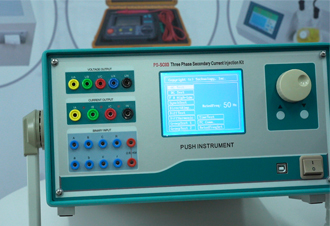 English
English


Evaluating Insulation Quality in Current Transformers Through Tan Delta Testing Methodology
Understanding the Tan Delta Test for Current Transformers
In the realm of electrical engineering, current transformers (CTs) are pivotal devices used for measuring alternating current (AC) and for providing isolation for metering and protective devices. To ensure the reliable performance of CTs, various testing methods are employed, one of the most critical being the Tan Delta test. This testing method helps assess the insulation properties of the transformer and is vital for maintaining the integrity of power systems.
What is Tan Delta Testing?
The Tan Delta test, also known as the power factor test, is a diagnostic method used to evaluate the insulation quality of electrical equipment, including current transformers. The test measures the dielectric dissipation factor (tan δ), which is a ratio of the resistive current to the capacitive current flowing through the insulation. In simpler terms, it quantifies how much energy is lost as heat when electrical current passes through the insulating material.
The value of the tangent delta provides insights into the insulation's health. A higher tan delta indicates a potential deterioration or weakness in the insulation, which could lead to malfunction, reduced performance, or even catastrophic failure of the transformer.
Importance of the Tan Delta Test
1. Predictive Maintenance By conducting Tan Delta tests, utilities and operators can monitor the condition of their current transformers over time. This preventive measure allows for the identification of insulation degradation before it leads to serious failures, enabling proactive maintenance decisions.
2. Safety Assurance Faulty insulation can pose a safety risk, potentially leading to short circuits, equipment damage, or even electrical hazards. Regular testing helps ensure that CTs remain within safe operating conditions, protecting both personnel and equipment.
3. Performance Optimization Understanding the tan delta value can help engineers optimize the operation of the current transformer. If the insulation is found to be degraded, timely intervention can enhance the operational efficiency and lifespan of the transformer.
tan delta test for current transformer

4. Compliance with Standards Many industries must adhere to strict regulatory standards regarding electrical equipment performance and safety. Regular tan delta testing helps organizations comply with these standards, avoiding penalties and ensuring reliability.
Conducting the Test
The Tan Delta test is straightforward. A test set applies an AC voltage to the current transformer, and the resulting current flow is analyzed to determine the tan delta value. The procedure generally includes
1. Preparation Isolate the CT from the system to prevent interference during testing.
2. Connection Connect the test leads to the primary and secondary terminals of the CT.
3. Testing Apply the appropriate voltage and measure the resulting currents to calculate the tan delta. This process may need to be repeated at different frequencies to gather comprehensive data.
4. Analysis The results are compared against established benchmarks, considering factors such as temperature and humidity to ensure accurate interpretation.
Conclusion
The Tan Delta test is an essential tool for assessing the insulation quality and overall health of current transformers. It provides valuable insights that can lead to improved maintenance strategies, enhanced safety, and compliance with regulatory requirements. As the demand for reliable power systems continues to grow, the role of tan delta testing in ensuring the longevity and performance of current transformers cannot be overstated. Regular testing and monitoring will not only prevent unexpected failures but also foster a culture of safety and efficiency in electrical operations.
-
Differences between open cup flash point tester and closed cup flash point testerNewsOct.31,2024
-
The Reliable Load Tap ChangerNewsOct.23,2024
-
The Essential Guide to Hipot TestersNewsOct.23,2024
-
The Digital Insulation TesterNewsOct.23,2024
-
The Best Earth Loop Impedance Tester for SaleNewsOct.23,2024
-
Tan Delta Tester--The Essential Tool for Electrical Insulation TestingNewsOct.23,2024





